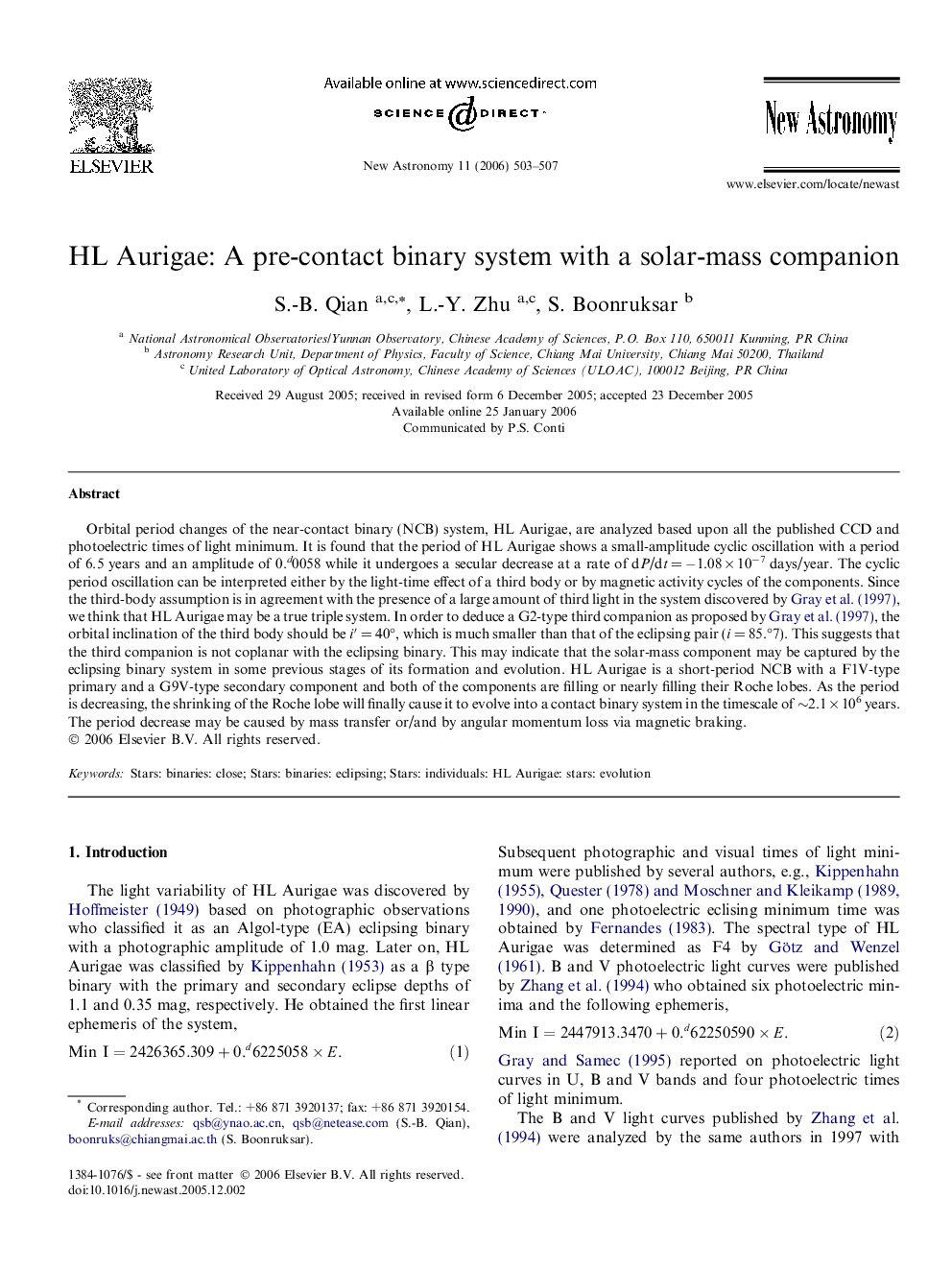| Article ID | Journal | Published Year | Pages | File Type |
|---|---|---|---|---|
| 1779871 | New Astronomy | 2006 | 5 Pages |
Abstract
Orbital period changes of the near-contact binary (NCB) system, HL Aurigae, are analyzed based upon all the published CCD and photoelectric times of light minimum. It is found that the period of HL Aurigae shows a small-amplitude cyclic oscillation with a period of 6.5 years and an amplitude of 0.d0058 while it undergoes a secular decrease at a rate of dP/dt = â1.08 Ã 10â7 days/year. The cyclic period oscillation can be interpreted either by the light-time effect of a third body or by magnetic activity cycles of the components. Since the third-body assumption is in agreement with the presence of a large amount of third light in the system discovered by Gray et al. (1997), we think that HL Aurigae may be a true triple system. In order to deduce a G2-type third companion as proposed by Gray et al. (1997), the orbital inclination of the third body should be iâ²Â = 40°, which is much smaller than that of the eclipsing pair (i = 85.°7). This suggests that the third companion is not coplanar with the eclipsing binary. This may indicate that the solar-mass component may be captured by the eclipsing binary system in some previous stages of its formation and evolution. HL Aurigae is a short-period NCB with a F1V-type primary and a G9V-type secondary component and both of the components are filling or nearly filling their Roche lobes. As the period is decreasing, the shrinking of the Roche lobe will finally cause it to evolve into a contact binary system in the timescale of â¼2.1 Ã 106 years. The period decrease may be caused by mass transfer or/and by angular momentum loss via magnetic braking.
Related Topics
Physical Sciences and Engineering
Physics and Astronomy
Astronomy and Astrophysics
Authors
S.-B. Qian, L.-Y. Zhu, S. Boonruksar,
